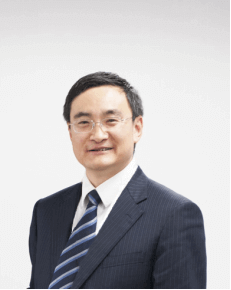News
Building the Eurasian Information Silk Road: An Exclusive Interview with Charlie Cao by the UK-Chinese Times
2019-02-26 China Telecom Europe(Chinese source: British Chinese times)
China Telecom (Europe) Ltd. (CTE), headquartered in London, was established in 2006 as a branch of China Telecom Global Ltd. (CTG), and is responsible for business across the Europe. The company is committed to the construction and development of the “Eurasian Information Silk Road”, using multiple independent submarine cables across the Eurasian continent and CTG's extensive international infrastructure to form the most advanced Eurasian networks (ENs). As the state-owned Chinese telecommunication service provider with the widest distribution in Europe, CTE has 18 branches in Europe. With its flexibility, speed and diversified services, it provides customers with world-class integrated voice, data and ICT communication solutions to meet the growing all-round communication needs of Chinese and European multinational corporations and overseas Chinese consumers.
Charlie has nearly 20 years of experience in the telecommunications industry, giving him deep and detailed knowledge. Based in London for the past 8 years, he is responsible for driving China Telecom’s business growth in Europe and continuously enhancing CTE’s position as a leading integrated communications service provider connecting Europe and Asia.
-
Managing Director of China Telecom Charlie Cao
-
UK Chinese Times: What’s the current status of China Telecom’s development in Europe?
Charlie Cao:We now have 18 branches and regions in Europe. Whether it’s local solutions for European companies or global solutions for Chinese companies, CTE always follows the principle of “Customer First, Service Foremost”. We aim to provide the best possible solutions for European companies by building on our strengths in Asia. At the same time, by benchmarking ourselves against our rivals, we’re constantly improving our service levels and providing a new choice for local enterprises.
-
China Telecom is committed to building the “Eurasian Information Silk Road”. What progress are you making?
Charlie Cao: Before 2006, the communication solutions between Europe and Asia were mainly provided by operators in Europe and America. They all relied on submarine cables to enter the Mediterranean Sea through the Atlantic Ocean, and then to the Indian Ocean and the Straits of Malacca to enter China. This takes a long time.
After the establishment of CTE in 2006, we found that land cables can be shorter than submarine cables. As a result, China Telecom and its partners proposed a new Eurasian communications solution that continues to expand new routes between Europe and Asia. We now have seven different land routes through Kazakhstan, Mongolia and the Russian Far East. In order to ensure a diversity of routes, we also provide direct access to the Indian Ocean through Pakistan; land cables through India, Laos and Thailand; and even some new routes, such as crossing Afghanistan, Kazakhstan, the Caspian Sea and the Black Sea. These different routes increase the diversity of connections between Asia and Europe, meeting the different needs of different regions and users. They mean that our Information Silk Road comprises both land and submarine solutions.
-
How does CTE give its customers a better international communications experience?
Charlie Cao: The main purpose of the Information Silk Road is to meet the needs of European and Asian customers, especially the financial industry. High-frequency trading relies on delays being kept down to milliseconds. Most ordinary users will accept a delay of 70-80 milliseconds. In the financial industry, that would be unacceptable, as dealing needs to be near-instantaneous. CTE is very aware of its routing advantages and will recommend advantageous routes based on user needs. We continue to build and optimise our routing solutions for customers.
-
How does CTE intend to grow its communications business in Europe?
Charlie Cao: CTE relies on submarine and land cables to provide services to meet long-standing user needs – shorter transmission times, better service response, tailoring our resources to solve user communication needs, and continuous improvement. We use our products and services to attract users and then we grow with them. We’re looking to do that in all regions of Europe. We want to strengthen our business by reinvesting in the European communications market, further expanding our personnel and services.
-
What can we look forward to seeing in CTE over the next few years?
Charlie Cao: Charlie Cao: In the short term, our goal is to continue to improve building our team and strengthening our infrastructure. The long-term development goal is to become a world-class service provider, leveraging our resources, infrastructure, platforms and hubs in the Asia-Pacific region to achieve global access for the network.
-
What other advantages does China Telecom Europe offer over other operators?
Charlie Cao: In addition to the advantages of the Information Silk Road, we are also committed to better service response. We have all the advantages that other Chinese companies have, and our people are more diligent and respond faster. In some important ways, we do better than the local operators.
-
What about customer service for public customers?
Charlie Cao: We have a global customer service centre in Hong Kong, China, which provides support languages including English, Chinese, Japanese and Cantonese. In the event of a network failure, the Global Network Maintenance Operations Centre is able to respond rapidly at any time of day or night.
-
What are the main challenges to the development of the business?
Charlie Cao: It takes time for Chinese companies to grow internationally and find the solutions that work for them. Those solutions also need to work with the local market – different markets have different operating requirements. It’s also a challenge for them to build a sustainable business model. In particular, it’s hard for them to match manpower and material resources. Finally, it takes time to build a reputation and overcome audience’s preconceptions.


